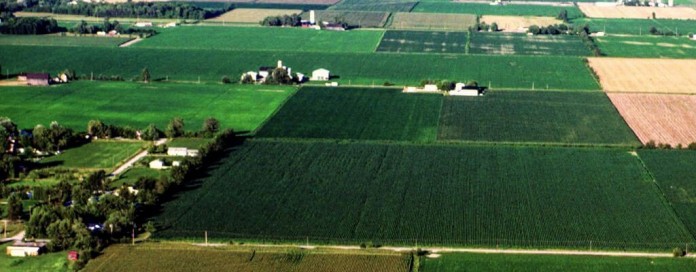WOOSTER, Ohio — If you don’t believe the global factors affecting the U.S. cattle market are numerous and complicated, you probably haven’t heard Dan Basse, president of Ag Resource Company, give an economic outlook.
By 2040, Japan’s population will drop by 25.3 million people. Today, the Black Sea region exports 34% of the world’s wheat. Brazil’s currency, the real, has been weak for several years versus the U.S. dollar. Those realities shape Basse’s predictions of fed cattle prices soon topping out near $160/hundredweight (cwt.) before softening to $120/cwt. or lower and, with normal weather, $3/bushel (bu.) corn prices all the way to 2019.
The seasoned market analyst spoke at the Feeding Quality Forum, Aug. 18 in La Vista, Nebraska, and Aug. 20 in Garden City, Kansas.
“There is no shortage of grain in the world, so U.S. users don’t have much to worry about,” Basse said, agreeing with USDA’s average yield prediction of 168 bu./acre.
Net income drop
U.S. grain producers, however, need to concentrate on making margin. Despite being down 9%, U.S. gross farm income is going to be the fourth largest on record this year, Basse said, but net farm income will see the biggest drop since 1932.
“Everything went higher as you made more money,” he said. “The problem is now that the cycle has changed, they are slow to take their hands out of your pocket. Our balance sheets can’t keep imploding at this rate without some readjustment in the cost side.”
Land, labor, nitrogen and seed have all risen dramatically. “These are the four factors that have to see readjustment if we are going to see $3 corn prices translate back to profitability for the American farmer,” Basse said.
Export picture
The strength of the U.S. dollar, which has trended upward since 2014, does not bode well for exports. Typically the dollar rises in six-year cycles.
“We are only at the beginning of year one-and-a-half of this dollar rally,” the analyst said. “That means we are fighting against others to export our goods into the world marketplace.”
Argentina, Russia and Brazil have seen poor currency exchange rates by comparison.
“This is really important because never before has the world seen where the United States wasn’t a predominant exporter of grains and meat,” he said.
In 2000 the Black Sea region only exported 4% of all wheat and corn combined. Today that’s 34% of the world’s wheat alone.
“They determine the world’s wheat prices,” Basse said.
Supply outpaces demand
Global grain production is outpacing demand growth. “Somebody in the world, from our work, has to cut 15 to 20 million acres of production to balance the world out,” Basse said. “Either I keep building up stocks everywhere if there is favorable weather or I need someone to cut.
“Is it going to be the Brazilian farmer that cuts back? No. Is it going to be the Australian or the Russian wheat and grain farmer that cuts back? No. Unfortunately it kind of falls on our shoulders.”
Cattle profits
If corn prices are trending lower to discourage production, then it makes sense that cattle prices are doing the opposite.
“Feeder prices have gone up very sharply as we tried to incentivize the cow-calf suppliers to produce more animals,” Basse said, noting the cattle herd increased in July for the first time since 2006. “We are all aware the expansion is now underway.”
Cow-calf producers have seen record profits as of late, he said.
“The second phase is when the feedlot does much better than he’s done, and that should come to play somewhere I’m thinking between the middle of 2016, maybe up to 2018 or 2019, but we have to have the availability of feeders before that can really get to that point,” Basse said.
Long-term signals
Bearish news lingers on the horizon, however. “What I’m troubled by when I look at U.S. beef, pork and poultry exports as a percent of the world total, everything is starting to turn down,” he said, again blaming the dollar.
Mature economies like Europe, Japan and Russia see meat consumption decline in tandem with their population decreases. By 2040, he expects those three to drop by a combined nearly 100 million people. For years, economists have pointed to countries like Pakistan, Bangladesh, Nigeria and India to help provide population growth, and growing markets for ag commodities, but Basse said it may take several more years for their economies to generate enough income to become leading buyers.
In the near-term, Ag Resource predicts “one final rally in the cattle market,” with cash fed cattle reaching $157 to $161/cwt. in October or November. By the first quarter of next year, that settles closer to $134/cwt.
Highs and lows
The theme was a plea to manage risk and margin. “Commodities are cyclical. I’m talking bearish today in agriculture, but it’s just part of the landscape we all live in,” Basse said. “You’ve got to make sure you’re around for when the good times are rolling again.”











